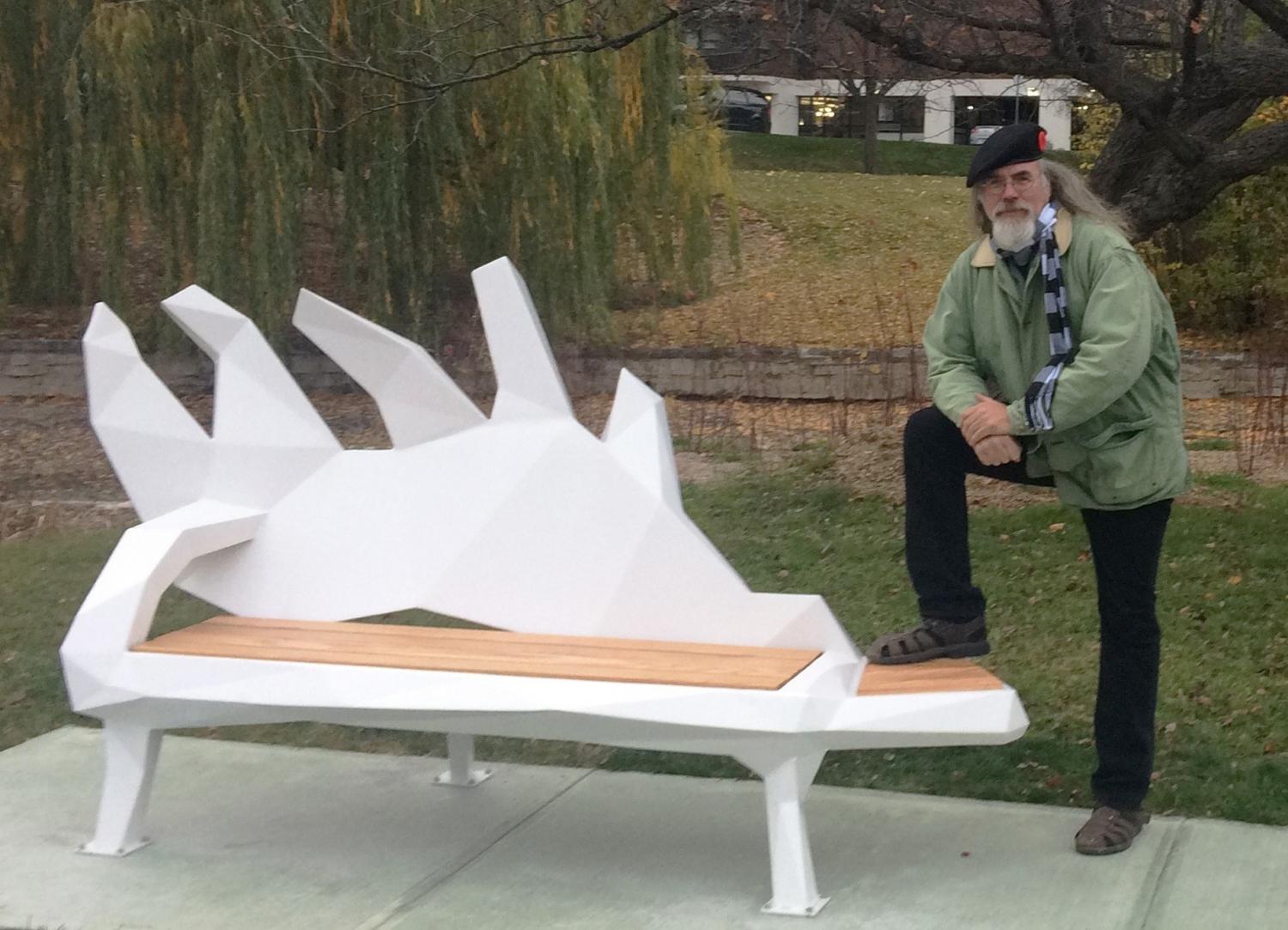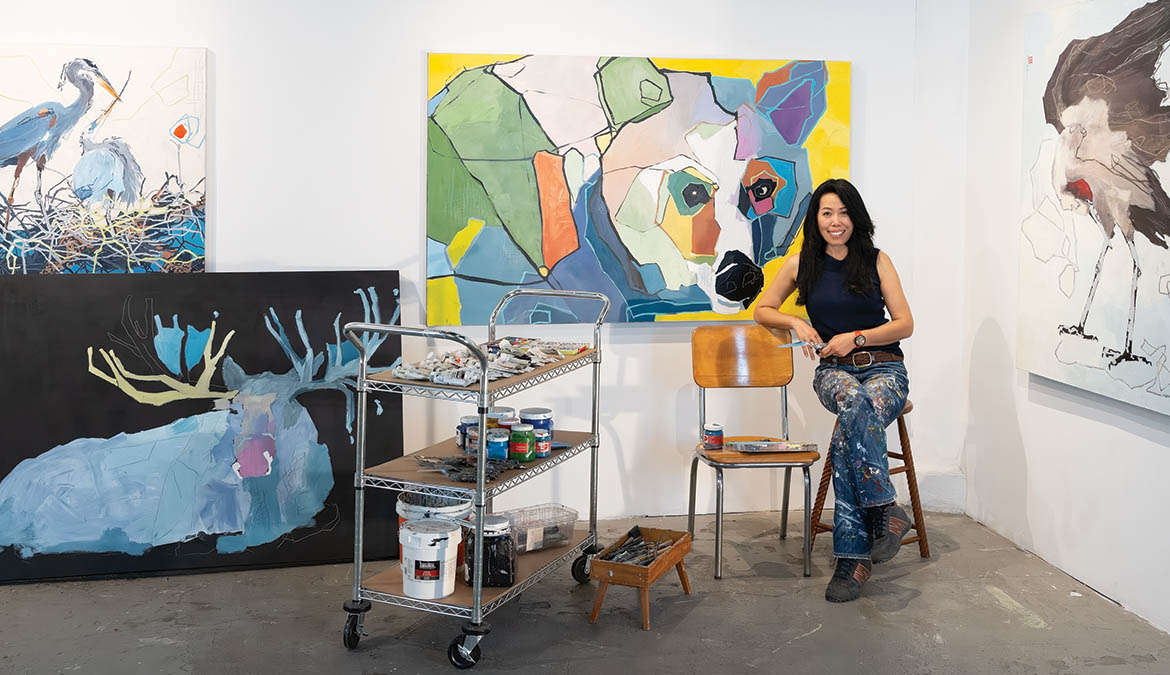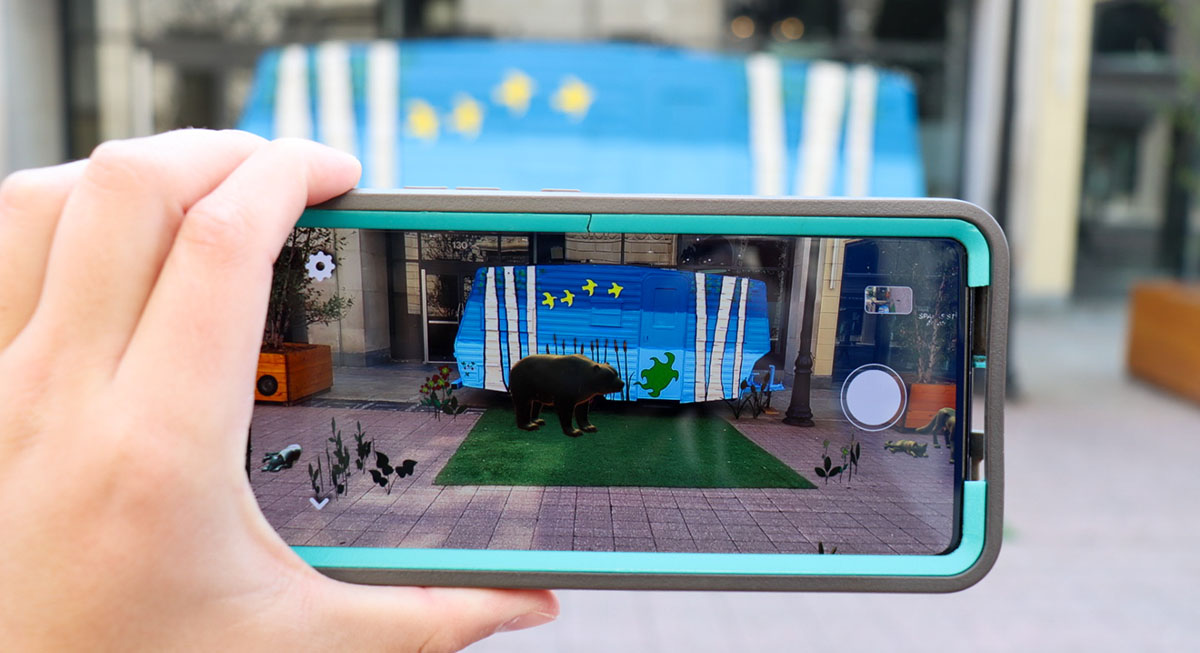
Indigenous Art Meets Augmented Reality on Sparks Street
Leading up to The National Day for Truth and Reconciliation, several Algonquin Anishinabeg artists from the Brascoupé family, along with Anishinaabe artist Rhonda Snow, have launched Akì eji pimadjiwomagak, meaning “Land Connection.” This comes in the form of several audio and augmented reality (AR) experiences celebrating Indigenous art and artists of Ottawa.
Akì eji pimadjiwomagak is a free experience that invites you on a journey of discovery, while connecting with the land and its stories. It encourages individuals to appreciate the beauty of nature and acknowledge the wisdom it holds.
The experience can be found through the Engage Art app that is available on the Apple and Google app stores. Created by EXAR Studios, the app help to support the expansion of Indigenous art across Canada.
“Our goal is to give audiences authentic, cultural experiences, working in collaboration with artists, institutions, and cities,” says Shishir Pande, co-founder, and CEO of EXAR Studios.
At the heart of this experience is the Brascoupé 18’x7’ camper Exhibit at 118 Sparks Street that features a beautiful painted mural created by Emily Brascoupé-Hoefler, with the help her father Simon, two sisters Claire and Mairi, her children Christian and Viktor, and Indigenous youth Ava and Elena Maracle.
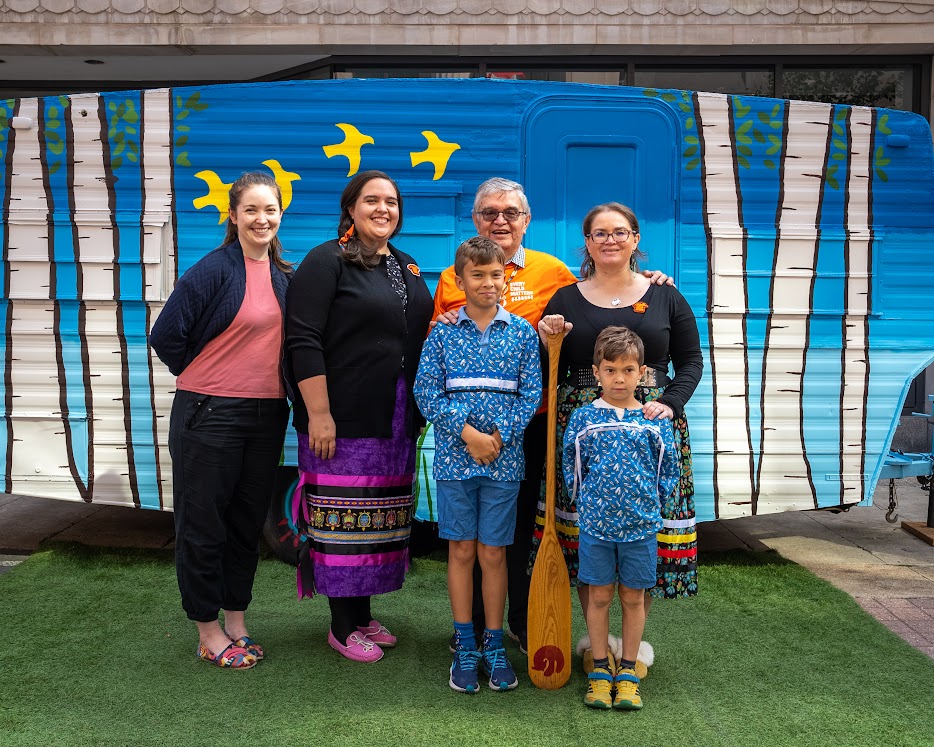
“Akì eji pimadjiwomagak provides an opportunity for us all to learn and reflect, and acknowledge that Ottawa is on unceded, unsurrendered Anishinabeg Algonquin territory,” says Kevin McHale, executive director, Sparks Street BIA.
Emily Brascoupé-Hoefler explains the motivation behind the mural: “In painting the mural, my family wanted to highlight the plants, animals and technology that are culturally important to Algonquin Anishinabeg People.”
The left side of the camper, used for the AR experience, features a mural designed with plants used by the Algonquin people for medicine, art, food, and technology. These plants include white birch, cat tails, wild strawberries, and Chaga. Algonquin words appear on the camper. Brascoupé-Hoefler says, “When you approach the camper, you are greeted with the word “Kwey” which means “hello.” She explains, “The Algonquin language is being revitalized by language keepers in Kitigan Zibi Anishinabeg and the Kitigan Zibi Cultural Centre has undertaken the complex and innovative work to promote and teach the language through games, videos, and culture camps.”
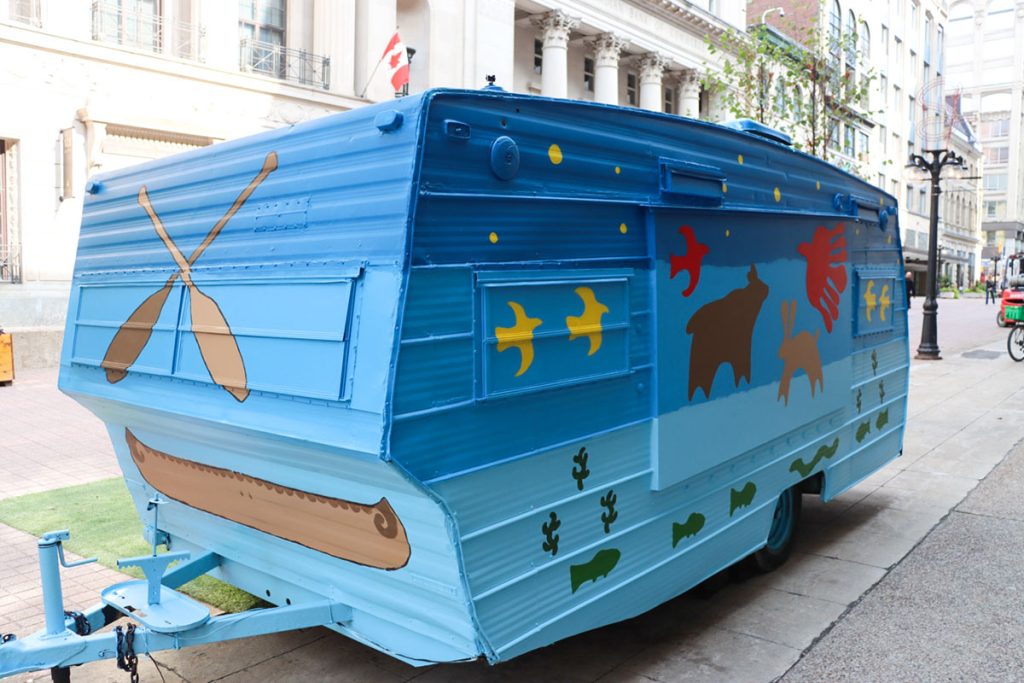
One side of the camper contains a mural filled with various animals. Created by Simon Brascoupé, it features an eagle, bear, rabbit, fish, eel, birds, aquatic plants, and stars, each containing countless stories of the significance and importance of these creatures. The other side features a birch bark canoe and paddles which are key historic tools that have symbolic resonance today with Algonquin people.
Using the Engage Art app, individuals can point their phones at the plant mural and engage in an AR experience where they will view 3D images of animals and plants. Individuals can also “get in” on the AR themselves and save a video or photograph on their smartphone. Users can hear Algonquin words relating to the theme of the exhibit.
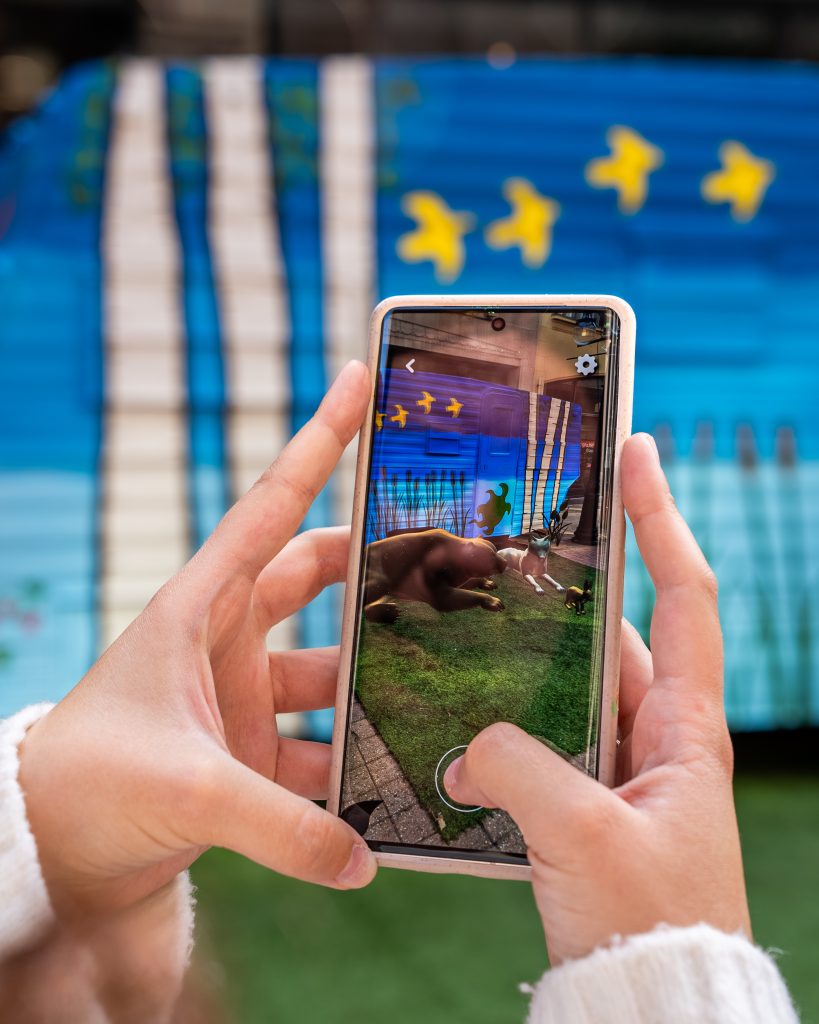
The app allows users to take a self-guided walking tour through six more stops to get the full Akì eji pimadjiwomagak experience. Make sure to visit these additional stops:
• Algonquin Wayfinding Wheel, City Hall, 110 Laurier Avenue.
• Algonquin Plaque, City Hall, 110 Laurier Avenue.
• Heartbeat of Mother Earth, National Arts Centre, 1 Elgin Street (includes an AR experience).
• Spirit Ponies at Confederation Park, Elgin Street (includes AR experience).
• Contemplation of Water, Rideau Canal Locks, Rideau Canal Promenade.
• Pimisi Station Collection, 160 Booth Street.
The Sparks Street Brascoupé exhibit is available until the end of October.

